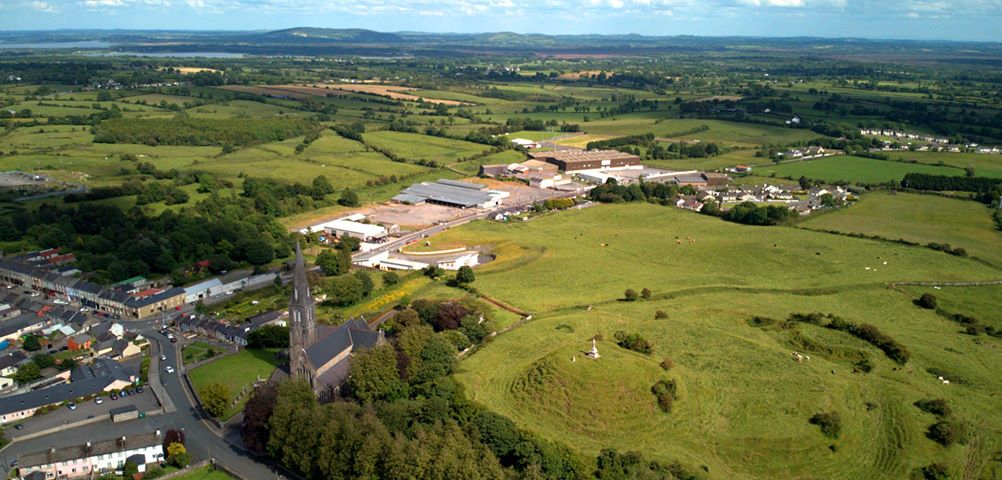Granard Motte & Bailey
An Anglo-Norman fortification, Granard Motte, dominates the landscape of this north-east Longford town. Built in 1199, it was one of Ireland's largest Motte and Bailey settlements.
History of Granard Motte and Bailey
Granard Motte and Bailey was built by Risteárd de Tiúit (anglicised as Richard Tuite) in 1199. De Tuite was granted lands in east Longford and into Westmeath in 1180 under King Henry II of England. He was later made the Lord Chief Justice of Ireland. Risteárd de Tiúit was a patron of the Cistercian monastery in the nearby Abbeylara. His remains were laid to rest there after he died in 1210.
The motte was a large manmade earthen mound. Like many motte and baileys in the county, Granard Motte and Bailey was constructed on the site of an earlier ringfort, reusing the earlier native Irish defensive building type.
Located at the base of the motte, the bailey consisted of a courtyard with living accommodation, animal sheds and storage areas. Granard Motte actually had a double bailey, signifying its importance.
The bailey would have been protected by a fence constructed of closely placed, vertical wooden stakes. A series of ramparts and ditches known as the ‘fosse’ also protected the bailey.
Originally, the motte would have had a timber structure called a keep on top. This would have been located at the heart of the castle complex.
In 1210, King John stayed at Granard Motte during his campaign against Hugh de Lacy.
Granard Motte and Baily was most likely the location of the inauguration site of the Ó Fearghaill Bán, the local branch of the O’Farrell Clan.
Patrón saint of Ireland, St Patrick, is said to have visited Granard in his mission to convert the Irish to Christianity. In 1932, to mark the 1500th anniversary of Patrick’s arrival in Ireland, a statue was erected in his honour on the summit of the Motte.
The land is now in private ownership, with its monument under the guardianship of the State.
There are no dedicated paths to the top of the Motte, and it is not to be walked upon so that the Motte is protected.





